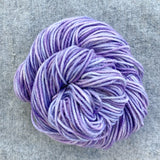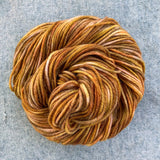
The inspiration for The Beekeeper - Fall 2021 Story Collection is drawn from the life of the beehive at harvest time; celebrating traditional beekeeping practices, the gifts of the hive, and the contemporary beekeepers tending bees according to the old ways.

Humans have tended bees for at least 9,000 years and evidence of ancient beekeeping practices have been linked to Ancient Egypt, Ancient Greece, and the Mayans, and in places like North Africa, Western and Central Europe, and the British Isles. Historically there were rich cultural traditions associated with tending bees and the hive. In Britain, beekeepers treated their hives as members of the family, messaging important happenings like births, marriages and deaths in the family and community through a practice called telling the bees. In Ancient Greece, the honeybee was considered a sacred animal, facilitating the passage between the natural world and the underworld as a psychopomp (definition: from Greek - a conductor of souls to the afterworld).

In Central Europe, hives were painted in vibrant colors with iconography from biblical stories and symbols to bless the hive and the beekeeper’s family (see The Painted Hive story here>>). Commercial beekeeping practices were developed around the turn of the 20th century in order to maximize honey production, which led to the loss of many of these beekeeping traditions. Today, as honeybee populations are severely threatened worldwide, some contemporary beekeepers are looking to history for clues about how to better understand, appreciate, and support the bees at this critical moment in time.

Samantha (Sami) Graf is an artist, herbalist, gardener and bee tender who draws from the old ways in all of her craft practices. Based on the teachings of the the Lyceum at the Sacred Trust in England, Ariella Daly in Sonoma County California (@beekeepinginskirts), and others, Sami is part of a movement of beekeepers questioning the agriculturalization of honey bees in the 20th century, and looking to history and ancestral wisdom to develop more bee-centric ways of being in relationship with the hive.

Sami tends bees without the chemical treatments and invasive procedures like culling queens that have become commonplace in commercial beekeeping. She also tends her hives in ceremonial ways, by incorporating seasonal rituals and traditional practices like telling the bees and creating medicines from the hive, including herbal mead, soaps, and handcrafted products.

According to Sami, her work with plants began as a child where the warm soil, creaking trees, and mysterious blackberry hedges were her first teachers. Since then the bees and their honeyed hive medicines have become an integral part of her practice. She spins together shamanic practices from the Lyceum, folk medicines from within her European ancestry, mythic based herb magic, and seasonal rituals. All rooted in a foundation of clinical herbal training. Whether working with clients, teaching students or working in her garden she believes that holistic health is rooted in returning to ancestral land honoring practices.

Sami offers small batch herbal medicines through her apothecary Cinder Botanica. With a focus on seasonal offerings and alchemical preparations, grown from seed to bottle with herbs from her garden, and medicines from the bees. Sami teaches classes on seasonal folk magic, herbal gardening, honey bees, and holistic dental health.
You can find Sami at: @cinder.botanica on Instagram and at https://www.etsy.com/shop/cinderbotanica/

The Beekeeper - Fall 2021 Story Collection includes four colorways representing the vibrancy of the hive and the bees journey from flower to comb. Each story collection includes four mini skeins (each approx. 25g) or worsted weight 100% superwash wool milled in the US. To order the Beekeeper Story Collection, visit: https://quillandquiverfiber.com/products/the-beekeeper-story-set

 |
Honey Harvest - This golden yellow evokes the height of the summer honey harvest, with golden sunlight and nectar transformed into one of the hive’s most treasured creations. |
 |
Rosemary flower - A cool periwinkle with purple and blue tones, an expression of the rosemary flower that nourishes the bees with much needed nectar in early spring and late fall. |
 |
Pollen - A rich combination of yellow, oranges, golds and umber representing the diverse array of pollen the bees pack into the combs to feed their young. |
 |
Berry Mead - The deep purple of perfectly plump blackberries, blueberries, and raspberries at the height of summer, alchemically turned into history’s oldest alcoholic beverage. |
We hope that by raising awareness of the beekeeping traditions that inspired this season’s Story Collections, you may consider supporting the resurgence of traditional beekeeping methods by purchasing honey and products from beekeepers following bee-centric practices. Check out: https://www.naturalbeekeepingtrust.org/ and https://www.pollinator.org/
Sources for more information:
- Ariella Daly’s Women’s Beekeeping Apprenticeship: https://www.honeybeewild.com/apprenticeship-2021
- Briggs, Helen, “Prehistoric Farmers were the first beekeepers”, BBC News. November 11, 2015: https://www.bbc.com/news/science-environment-34749846
- McGreal, Kim, Psychopomps: Tour Guides to the After Life, February 28, 2019: https://folklorethursday.com/myths/psychopomp-tour-guides-to-the-afterlife/
- The Sacred Trust, Lyceum training: https://sacredtrust.org/workshops/pollen/
Images courtesy of Samatha Graf. Title image courtesty of Damien Tupinier on Unsplash. Copyright: Quill & Quiver Fiber, 2021. All Rights Reserved.

Leave a comment